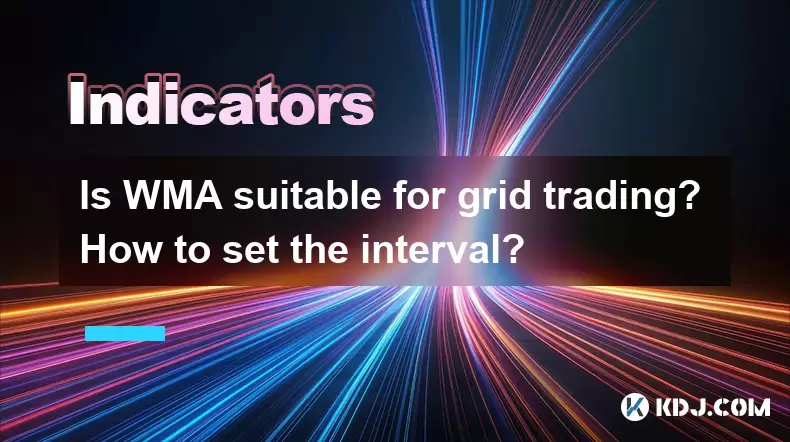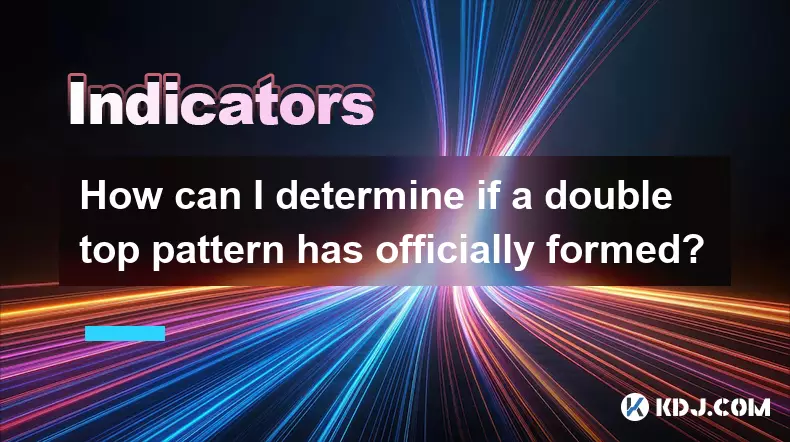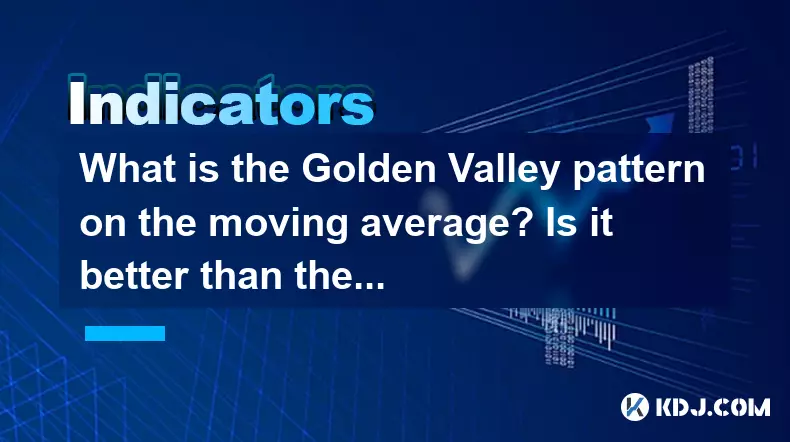-
 bitcoin
bitcoin $114320.977035 USD
-0.40% -
 ethereum
ethereum $4152.439985 USD
-1.75% -
 tether
tether $1.000111 USD
-0.04% -
 xrp
xrp $2.843037 USD
-1.63% -
 bnb
bnb $1013.349380 USD
-1.62% -
 solana
solana $208.362767 USD
-2.10% -
 usd-coin
usd-coin $0.999783 USD
0.00% -
 dogecoin
dogecoin $0.232559 USD
-1.00% -
 tron
tron $0.333491 USD
-1.09% -
 cardano
cardano $0.806310 USD
0.19% -
 hyperliquid
hyperliquid $45.023720 USD
-1.59% -
 ethena-usde
ethena-usde $1.000819 USD
-0.06% -
 chainlink
chainlink $21.241249 USD
-2.11% -
 avalanche
avalanche $30.035416 USD
-0.66% -
 stellar
stellar $0.364984 USD
-2.05%
Is WMA suitable for grid trading? How to set the interval?
WMA helps set grid trading intervals by analyzing market trends, allowing traders to adjust buy/sell orders based on momentum for potentially better profits.
May 21, 2025 at 07:42 pm

Introduction to WMA and Grid Trading
WMA, or Weighted Moving Average, is a type of moving average that assigns a higher weighting to more recent data points. In the cryptocurrency trading world, WMA is often used as a technical indicator to help traders identify potential trends and make more informed trading decisions. Grid trading, on the other hand, is a trading strategy that involves placing buy and sell orders at regular intervals within a specified price range. The goal of grid trading is to profit from the natural volatility of the market by buying low and selling high within the grid.
Understanding WMA in the Context of Grid Trading
When considering whether WMA is suitable for grid trading, it's important to understand how the two concepts can work together. WMA can be used to help set the intervals for the grid by providing insights into the market's momentum and direction. By analyzing the WMA, traders can determine appropriate price levels for their buy and sell orders within the grid. This can potentially enhance the effectiveness of the grid trading strategy by aligning it with the prevailing market trends.
Setting the Interval Using WMA
To set the interval for grid trading using WMA, traders need to follow a series of steps that involve calculating the WMA and then using it to determine the grid's price levels. Here's how you can do it:
Calculate the WMA: First, you need to calculate the WMA for the chosen period. The formula for WMA is:[\text{WMA} = \frac{\sum_{i=1}^{n} w_i \cdot pi}{\sum{i=1}^{n} w_i}]where ( p_i ) are the prices, ( w_i ) are the weights, and ( n ) is the number of periods. The weights are typically assigned in a linear fashion, with the most recent data point receiving the highest weight.
Analyze the WMA Trend: Once you have the WMA values, analyze the trend to understand the market's direction. If the WMA is trending upwards, it indicates a bullish market, whereas a downward trend suggests a bearish market.
Set the Grid Intervals: Based on the WMA trend, set the intervals for your grid. In a bullish market, you might want to set tighter intervals to capitalize on the upward momentum. Conversely, in a bearish market, wider intervals might be more appropriate to capture potential rebounds.
Adjust the Grid: Continuously monitor the WMA and adjust your grid intervals accordingly. If the WMA shifts direction, you may need to recalibrate your grid to align with the new market trend.
Benefits of Using WMA for Grid Trading
Using WMA for grid trading can offer several benefits. Firstly, it helps traders to be more responsive to market changes by adjusting the grid intervals based on the WMA trend. This can potentially lead to more profitable trades as the grid is better aligned with the market's direction. Secondly, WMA can provide a clearer picture of the market's momentum, which is crucial for setting effective grid intervals. By leveraging WMA, traders can fine-tune their grid trading strategy to better suit the current market conditions.
Practical Example of WMA in Grid Trading
Let's consider a practical example to illustrate how WMA can be used in grid trading. Suppose you are trading Bitcoin (BTC) and you decide to use a 10-day WMA to set your grid intervals. You calculate the WMA and observe that it's trending upwards, indicating a bullish market. Based on this, you decide to set your grid intervals at 1% increments, starting from the current price of $50,000.
- Buy Order at $50,000: You place a buy order at the current price.
- Sell Order at $50,500: You place a sell order at 1% above the current price.
- Buy Order at $50,000: If the price drops to $50,000 again, you place another buy order.
- Sell Order at $50,500: If the price rises to $50,500, you place another sell order.
As the market continues to trend upwards, you keep adjusting your grid intervals based on the WMA to ensure that your buy and sell orders are aligned with the market's momentum. This approach can help you maximize your profits by capitalizing on the bullish trend.
Considerations and Limitations
While using WMA for grid trading can be beneficial, it's important to consider some limitations and potential challenges. Firstly, WMA is a lagging indicator, meaning it reacts to past price movements rather than predicting future ones. This can sometimes lead to delayed adjustments in the grid intervals, which may impact the strategy's effectiveness. Secondly, the choice of the WMA period can significantly affect the results. A shorter period may provide more responsive signals, but it can also be more susceptible to market noise. Conversely, a longer period may smooth out the noise but could delay the signals.
Frequently Asked Questions
Q1: Can WMA be used with other indicators for grid trading?Yes, WMA can be combined with other technical indicators such as the Relative Strength Index (RSI) or Moving Average Convergence Divergence (MACD) to enhance the grid trading strategy. These additional indicators can provide further insights into market conditions and help traders make more informed decisions about setting grid intervals.
Q2: How often should I recalculate the WMA for grid trading?The frequency of recalculating the WMA depends on the trading timeframe and market volatility. For short-term trading, you might recalculate the WMA daily or even hourly. For longer-term trading, weekly or monthly recalculations might be sufficient. It's important to find a balance that allows you to stay responsive to market changes without overreacting to short-term fluctuations.
Q3: Is WMA suitable for all types of cryptocurrencies?WMA can be applied to any cryptocurrency, but its effectiveness may vary depending on the specific asset's volatility and trading volume. For highly volatile cryptocurrencies, WMA can help traders navigate the market's ups and downs more effectively. However, for less volatile assets, other indicators might be more suitable.
Q4: Can I automate the process of setting grid intervals using WMA?Yes, it is possible to automate the process of setting grid intervals using WMA with the help of trading bots or custom scripts. These tools can continuously calculate the WMA and adjust the grid intervals based on the latest data, allowing for a more hands-off approach to grid trading. However, it's crucial to monitor the automated system to ensure it aligns with your trading goals and risk tolerance.
Disclaimer:info@kdj.com
The information provided is not trading advice. kdj.com does not assume any responsibility for any investments made based on the information provided in this article. Cryptocurrencies are highly volatile and it is highly recommended that you invest with caution after thorough research!
If you believe that the content used on this website infringes your copyright, please contact us immediately (info@kdj.com) and we will delete it promptly.
- BlockDAG, DOGE, HYPE Sponsorship: Crypto Trends Shaping 2025
- 2025-10-01 00:25:13
- Deutsche Börse and Circle: A StableCoin Adoption Powerhouse in Europe
- 2025-10-01 00:25:13
- BlockDAG's Presale Buzz: Is It the Crypto to Watch in October 2025?
- 2025-10-01 00:30:13
- Bitcoin, Crypto, and IQ: When Genius Meets Digital Gold?
- 2025-10-01 00:30:13
- Stablecoins, American Innovation, and Wallet Tokens: The Next Frontier
- 2025-10-01 00:35:12
- NBU, Coins, and Crypto in Ukraine: A New Yorker's Take
- 2025-10-01 00:45:14
Related knowledge

What is a tower bottom candlestick pattern? Does it have a high success rate?
Sep 22,2025 at 07:18am
Tower Bottom Candlestick Pattern Explained1. The tower bottom candlestick pattern is a reversal formation that typically appears at the end of a downt...

What is a black hole pattern in the MACD indicator? Is it a cause for concern?
Sep 21,2025 at 06:54pm
Bitcoin's Role in Decentralized Finance1. Bitcoin remains the cornerstone of decentralized finance, serving as a benchmark for value and security acro...

How can I use the psychological line (PSY) to determine market sentiment?
Sep 17,2025 at 02:19pm
Understanding the Psychological Line (PSY) in Cryptocurrency TradingThe Psychological Line, commonly referred to as PSY, is a momentum oscillator used...

How can I determine if a double top pattern has officially formed?
Sep 21,2025 at 03:18am
Understanding the Structure of a Double Top Pattern1. A double top pattern consists of two distinct peaks that reach approximately the same price leve...

What is the Golden Valley pattern on the moving average? Is it better than the Silver Valley pattern?
Sep 21,2025 at 02:54pm
Understanding the Golden Valley Pattern in Moving Averages1. The Golden Valley pattern is a technical formation observed in cryptocurrency price chart...

What does a death cross of the RSI in the strong zone (above 50) mean?
Sep 17,2025 at 10:54pm
Understanding the Death Cross in RSI Context1. The term 'death cross' is traditionally associated with moving averages, where a short-term average cro...

What is a tower bottom candlestick pattern? Does it have a high success rate?
Sep 22,2025 at 07:18am
Tower Bottom Candlestick Pattern Explained1. The tower bottom candlestick pattern is a reversal formation that typically appears at the end of a downt...

What is a black hole pattern in the MACD indicator? Is it a cause for concern?
Sep 21,2025 at 06:54pm
Bitcoin's Role in Decentralized Finance1. Bitcoin remains the cornerstone of decentralized finance, serving as a benchmark for value and security acro...

How can I use the psychological line (PSY) to determine market sentiment?
Sep 17,2025 at 02:19pm
Understanding the Psychological Line (PSY) in Cryptocurrency TradingThe Psychological Line, commonly referred to as PSY, is a momentum oscillator used...

How can I determine if a double top pattern has officially formed?
Sep 21,2025 at 03:18am
Understanding the Structure of a Double Top Pattern1. A double top pattern consists of two distinct peaks that reach approximately the same price leve...

What is the Golden Valley pattern on the moving average? Is it better than the Silver Valley pattern?
Sep 21,2025 at 02:54pm
Understanding the Golden Valley Pattern in Moving Averages1. The Golden Valley pattern is a technical formation observed in cryptocurrency price chart...

What does a death cross of the RSI in the strong zone (above 50) mean?
Sep 17,2025 at 10:54pm
Understanding the Death Cross in RSI Context1. The term 'death cross' is traditionally associated with moving averages, where a short-term average cro...
See all articles










































































